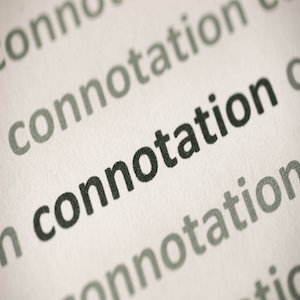By Dr. Ken Broda Bahm:

In the case of Kyle Rittenhouse, the individual on trial for killing two men and wounding a third at a Kenosha, Wisconsin protest in August 2020, the judge has set some terms on language. According to press reports, the judge has ruled that the Defense may characterize the men who were shot as “looters,” “rioters,” and “arsonists,” but the prosecution may not refer to the men as the “victims” of a shooting, because the term “victim” is “a loaded, loaded word.” While that ruling has been widely criticized as hypocritical, and as possibly indicating a bias on the judge’s part, it is worth remembering that all words are “loaded” in the sense of carrying impressions other than pure denotative meaning, it is just a matter of degree. More basically, the dispute is a reminder to pay attention to language.
In a recent paper (Crichton, 2020), a Howard University law professor opens with the observation that, “a surgeon uses a scalpel, a potter uses clay, and an attorney uses words.” Professor Chrichton’s point is that attorneys have a duty to be conscious of the effects of language. And in this case, if jurors are encouraged to think of those who were shot at a protest against police violence as “looters,” “rioters,” and “arsonists,” but not “victims,” then that certainly matters to the frame of mind that is being applied to the case. Even in less sensational cases, the labels matter. For example, is your client a “company,” a “corporation,” a “business,” or an “enterprise”? Are we talking about a “failure,” a “breach,” or a “broken promise”? In all of the ways we describe any case, it is essential to think of the connotations. In this post, I’ll share three quick practical ways of doing that with whatever options aren’t foreclosed by the judge.
Brainstorm the Labels
There are multiple ways to phrase anything. When I think on a trial theme, for example, I will often try to jot down as many ways as possible. Using columns, I will write out labels or characterizations of the parties, and try different ways of answering the “who did what to whom?” question, including all the different ways to characterize the central subjects, the actions, and the predicates. It is a good way to see what rises to the top as the perfect expression.
Test the Reactions
When we are deep into a case, we are all going to be constrained by our individual perceptions. That is why it is a great idea to run your language and your framing of the case by a formal focus group, or even an informal “sounding board,” to see what they think. If you get the chance to see mock jurors deliberate, pay careful attention to the words they use, especially when speaking in your defense.
Keep the End in Mind
Language is tool, a means to an end. So keep in mind, “What is the end?” What is your goal and your intended result? Obviously, you want your language and your story to make listeners favorable to your client and unfavorable to the other side. But more specifically, what kinds of reactions do you want? Do you want them to see your client as active or as passive? As central or peripheral? As powerful or powerless? Think about the state of mind that leads to the most favorable outcome, and then think of the terms that tend to accompany or invoke that state of mind. Wordsmithing is a big part of telling your story, so keep thinking until you’ve got it just right.

Thanks for reading. I am a litigation consultant (bio here) specializing in mock trial research, witness preparation, jury selection, and case strategy, generally (but not always) in high-value civil cases. If you have a comment, a request for a future topic, or a concern about a current area of litigation, or a question about your own case, contact me now.
Other Posts on Language:
Crichton, S, What Happens When the Media Gets Ahead of Your Client’s Story? An Attorney’s Duty to Use Conscious Word Choice (January 28, 2020). Available at SSRN: https://ssrn.com/abstract=3527115 or http://dx.doi.org/10.2139/ssrn.3527115